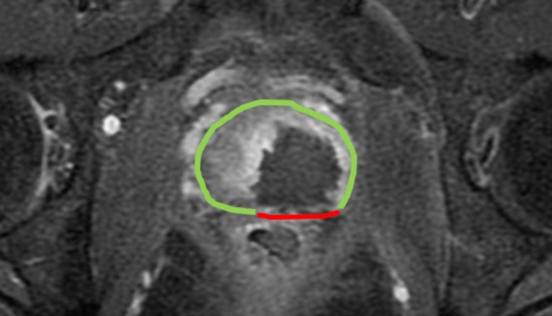EAU 2020: Outcomes of Salvage Radical Prostatectomy after Focal Therapy: Good Functional and Pathological R... - UroToday
(UroToday.com) The focal therapy for prostate cancer thematic session at the European Association of Urology (EAU) Virtual 2020 meeting annual meeting featured two talks on outcomes of salvage radical prostatectomy after focal therapy, with Sebastien Crouzet, MD, PhD, discussing the ability to achieve good function and pathological results after this procedure. Dr. Crouzet notes that strict patient selection for focal therapy is essential and must include (i) a multi-parametric magnetic resonance imaging (mpMRI) scan plus randomized and targeted biopsies, (ii) careful guidance and a safety margin during treatment, and (iii) a follow-up mpMRI and biopsy at one-year post-treatment. Furthermore, focal therapy should be performed on trials, it may be repeated if needed, and it still allows for salvage treatment options.

Regarding a salvage prostatectomy after focal therapy, there are several requirements for performing an adequate operation, including (i) an experienced surgeon, (ii) preservation of key anatomical landmarks after focal therapy (bladder neck, anterior, contralateral side, and the apex), (iii) not performing the surgery too early (should be >= 1 year after focal therapy), and (iv) starting the operation on the non-treated side of the prostate.
Dr. Crouzet’s experience includes 280 focal high intensity focused ultrasound (HIFU) cases, with 87% being performed on a clinical trial. This included 35% of patients with GG1 disease, 57% with GG2, and 8% with GG3 prostate cancer. Over a median follow-up of 3.4 years, the radical treatment-free rate at 1 year was 100% and at 5 years was 81%. Among those receiving salvage treatment, 10.7% had HIFU, 46.4% had external beam radiotherapy, and 42.9% of patients had a robotic prostatectomy. Among those receiving a salvage robotic prostatectomy, Gleason upgrading occurred in 25% (GG3: 16%, >= GG4: 8%) of patients. The mean PSA at 2.4 years after surgery was 0.06 ng/mL and negative margins were achieved in 71% of patients. No patients have recurred and none have metastasized. Furthermore, at two years the continence rate (no pads) was 89% and 73% of patients had an International Index of Erectile Function (IIEF) score >16.
Dr. Crouzet concluded his presentation of favorable outcomes with salvage treatment after focal therapy with the following take-home messages:
- Salvage prostatectomy after focal treatment is feasible
- Early functional results seem similar to those obtained in first-line treatments
- Oncological results show no upgrading in 75% of cases
- Careful patient selection and close follow-up is mandatory for focal therapy patients
- Salvage prostatectomy is feasible and safe but should only be performed by expert surgeons
- Patients must be warned of the risk of upgrading and the possibility of less satisfactory results
Presented by: Sebastien Crouzet, MD, PhD, Edouard Herriot Hospital, Universite de Lyon, Lyon, France
Written by: Zachary Klaassen, MD, MSc – Assistant Professor of Urology, Georgia Cancer Center, Augusta University/Medical College of Georgia, Augusta, GA, USA, Twitter: @zklaassen_md, at the Virtual 2020 EAU Annual Meeting #EAU20, July 17-19, 2020.



Comments
Post a Comment